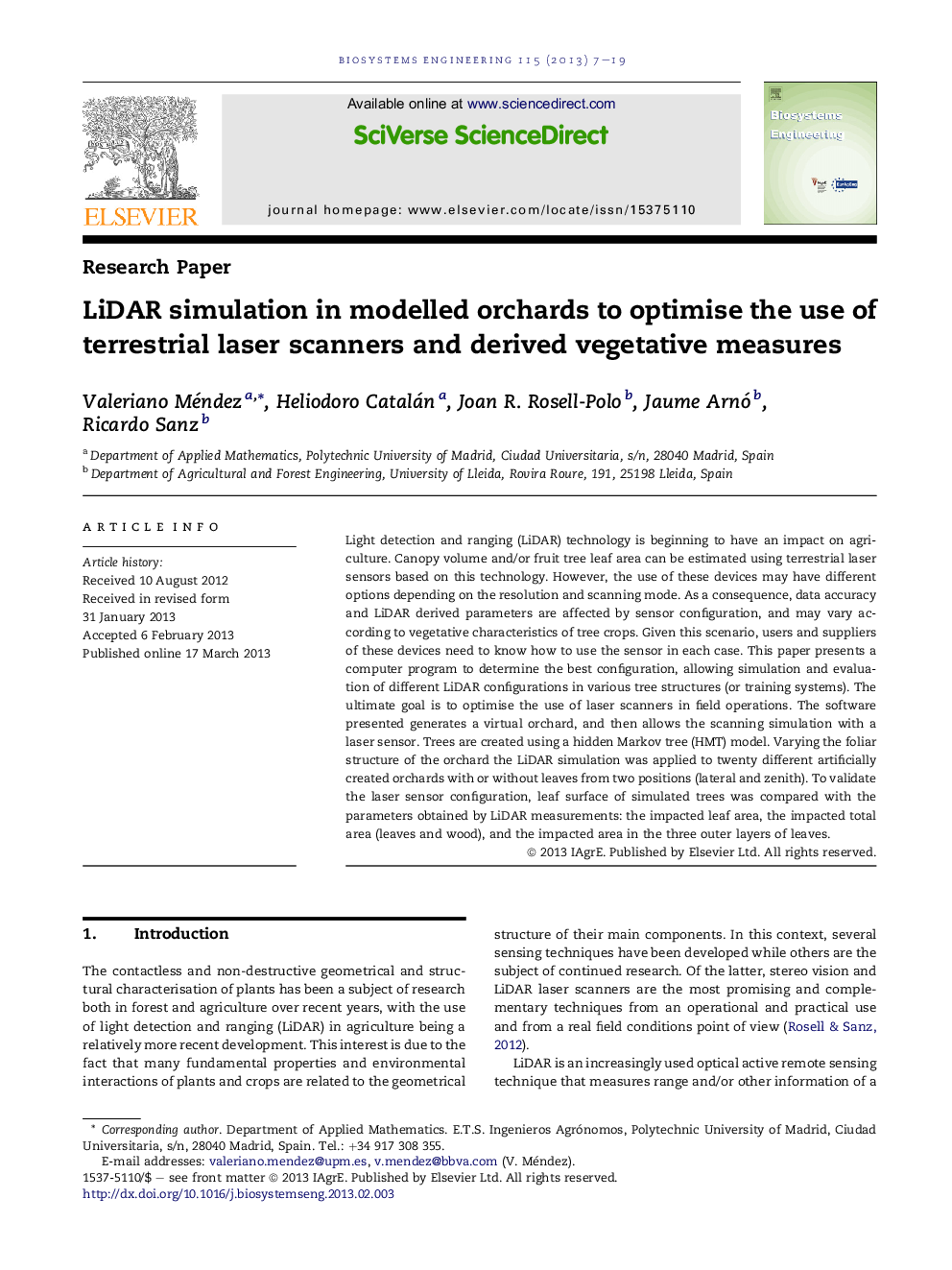| Article ID | Journal | Published Year | Pages | File Type |
|---|---|---|---|---|
| 1711436 | Biosystems Engineering | 2013 | 13 Pages |
Light detection and ranging (LiDAR) technology is beginning to have an impact on agriculture. Canopy volume and/or fruit tree leaf area can be estimated using terrestrial laser sensors based on this technology. However, the use of these devices may have different options depending on the resolution and scanning mode. As a consequence, data accuracy and LiDAR derived parameters are affected by sensor configuration, and may vary according to vegetative characteristics of tree crops. Given this scenario, users and suppliers of these devices need to know how to use the sensor in each case. This paper presents a computer program to determine the best configuration, allowing simulation and evaluation of different LiDAR configurations in various tree structures (or training systems). The ultimate goal is to optimise the use of laser scanners in field operations. The software presented generates a virtual orchard, and then allows the scanning simulation with a laser sensor. Trees are created using a hidden Markov tree (HMT) model. Varying the foliar structure of the orchard the LiDAR simulation was applied to twenty different artificially created orchards with or without leaves from two positions (lateral and zenith). To validate the laser sensor configuration, leaf surface of simulated trees was compared with the parameters obtained by LiDAR measurements: the impacted leaf area, the impacted total area (leaves and wood), and the impacted area in the three outer layers of leaves.
► A virtual orchard was modelled using a hidden Markov tree (HMT) model. ► A terrestrial laser sensor (LIDAR) was simulated. ► Impacted leaf area, total area, and area of three outer layers of leaves calculated. ► A good correlation was found between these parameters.
